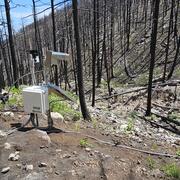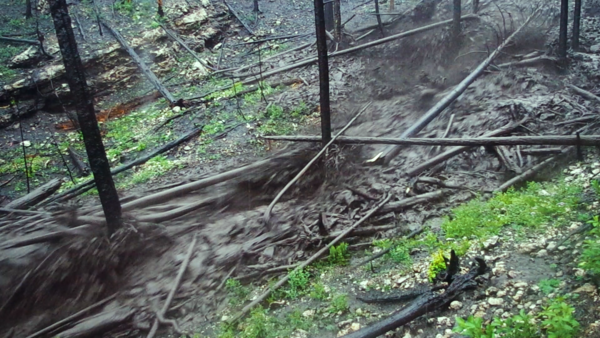Postfire debris flow in the 2024 Elk Fire burn area
Postfire debris flow in the 2024 Elk Fire burn areaA debris flow recorded by a USGS Landslide Monitoring Station in the 2024 Elk Fire burn area near Dayton, Wyoming. The flow was triggered by intense rainfall during a thunderstorm on the evening of July 15, 2025.
























